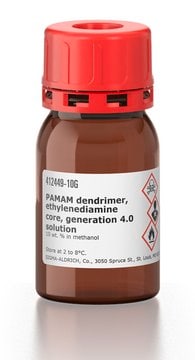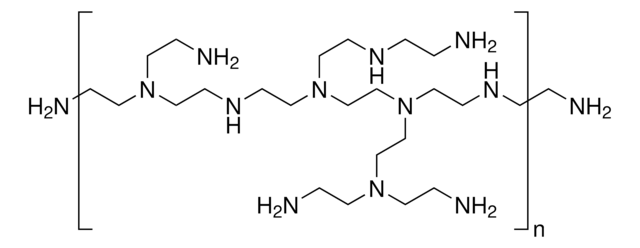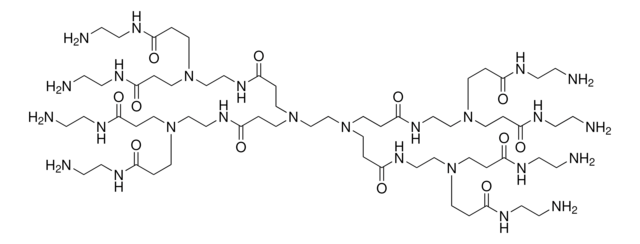551635
Trimethoxy[3-(methylamino)propyl]silane
95%
동의어(들):
N-Methyl-3-(trimethoxysilyl)propylamine, [3-(Methylamino)propyl]trimethoxysilane
로그인조직 및 계약 가격 보기
모든 사진(1)
About This Item
Linear Formula:
(CH3O)3Si(CH2)3NHCH3
CAS Number:
Molecular Weight:
193.32
Beilstein:
2072720
EC Number:
MDL number:
UNSPSC 코드:
12352103
PubChem Substance ID:
NACRES:
NA.23
추천 제품
분석
95%
양식
liquid
bp
106 °C (lit.)
density
0.975 g/mL at 25 °C (lit.)
SMILES string
CNCCC[Si](OC)(OC)OC
InChI
1S/C7H19NO3Si/c1-8-6-5-7-12(9-2,10-3)11-4/h8H,5-7H2,1-4H3
InChI key
DVYVMJLSUSGYMH-UHFFFAOYSA-N
유사한 제품을 찾으십니까? 방문 제품 비교 안내
일반 설명
Trimethoxy[3-(methylamino)propyl] silane, also known as N-Methyl-3-(trimethoxysilyl)propylamine, is an aminoalkyl silane compound widely utilized in surface modification and as a precursor in the synthesis of functionalized materials. It is primarily employed for its ability to modify surfaces through silanization. This process enhances the adhesion properties of substrates, making it valuable in coatings, adhesives, and composites.
애플리케이션
- Trimethoxy[3-(methylamino)propyl] silane is used ; As an amino precursor to synthesize nickel modified amino silica sols via hydrolysis method. which induces the formation of microporous membranes for methanol-selective, high-flux pervaporation.
- As a silane coupling agent in the synthesis of RuCl3/ZrSBA-15-AP catalysts, which facilitate the hydrogenation of CO2 to produce formic acid.
- As an amino polymer used in the modification of black phosphorus nanosheets, which are employed in sensors to detect trace amounts of CO2 at room temperature.
- in the surface modification of Au@SiO2 nanoparticles to create positively or negatively charged surfaces. This modification is utilized in Cu-doped TiO2 electrodes for electrochemiluminescence sensing applications.
Trimethoxy[3-(methylamino)propyl]silane was coated onto a substrate for the preparation of gold dimers by aggregating gold nanospheres. The silane may be used as a silane coupling agent to prepare silica nanoparticles. 2 It may be used to modify quartz substrates.
특징 및 장점
- Silanecoupling agents enhance adhesion between organic and inorganic materials,improving the strength and performance of glass-fiber reinforced plastics.
- With two functionalgroups—one for organic and one for inorganic materials—this enables versatilebonding and enhanced performance across various materials.
신호어
Danger
유해 및 위험 성명서
예방조치 성명서
Hazard Classifications
Eye Dam. 1
Storage Class Code
10 - Combustible liquids
WGK
WGK 3
Flash Point (°F)
179.6 °F - closed cup
Flash Point (°C)
82 °C - closed cup
개인 보호 장비
Eyeshields, Gloves, type ABEK (EN14387) respirator filter
이미 열람한 고객
Water-soluble conjugated polymer-induced self-assembly of gold nanoparticles and its application to SERS
Langmuir, 24(19), 10608-10611 (2008)
Yujie Zhang et al.
Journal of chromatography. A, 1626, 461366-461366 (2020-08-17)
An alternative method for efficient synthesis of urea-functionalized silanes was proposed on the basis of an N, N'-carbonyldiimidazole-mediated acyl-transfer reaction between various amino-containing building blocks. The employment of different parent aminosilanes and alkylamines afforded an array of urea-containing silanes, which
Covalent organic/inorganic hybrid proton-conductive membrane with semi-interpenetrating polymer network: preparation and characterizations.
Fu R, et al.
Journal of Power Sources, 179(2), 458-466 (2008)
Direct synthesis of highly ordered large-pore functionalized mesoporous SBA-15 silica with methylaminopropyl groups and its catalytic reactivity in flavanone synthesis.
Wang X, et al.
Microporous and Mesoporous Materials : The Official Journal of the International Zeolite Association, 85(3), 241-251 (2005)
Functionalization of delaminated zeolite ITQ-6 for the adsorption of carbon dioxide.
Zukal A, et al.
Langmuir, 25(17), 10314-10321 (2009)
자사의 과학자팀은 생명 과학, 재료 과학, 화학 합성, 크로마토그래피, 분석 및 기타 많은 영역을 포함한 모든 과학 분야에 경험이 있습니다..
고객지원팀으로 연락바랍니다.











